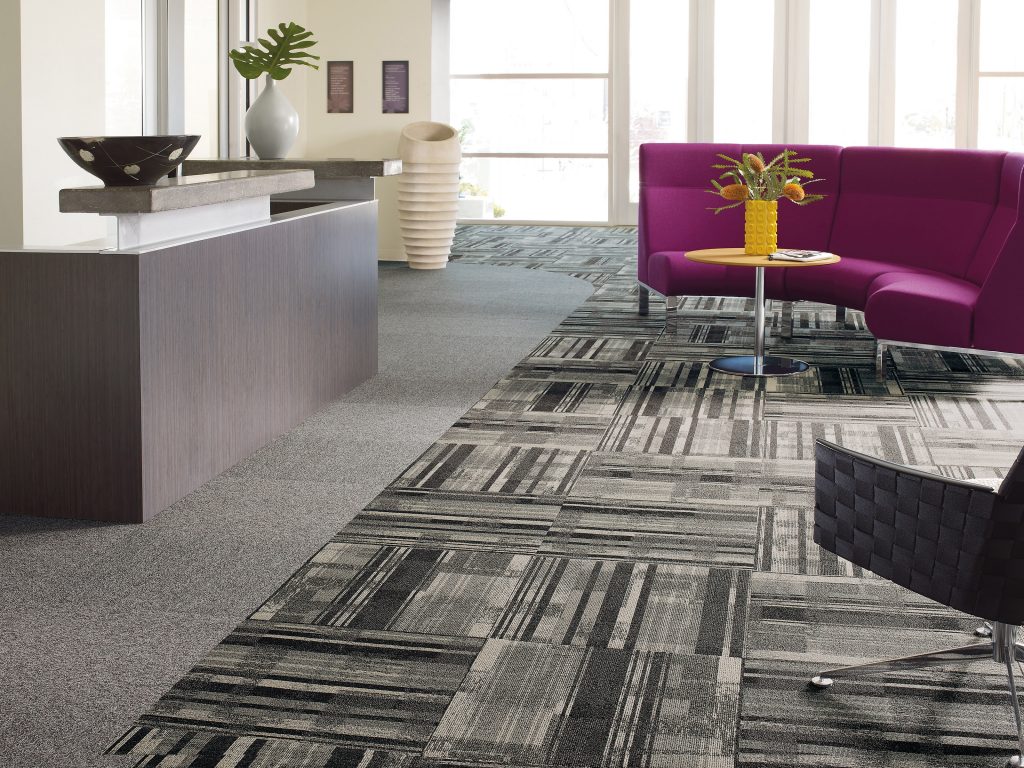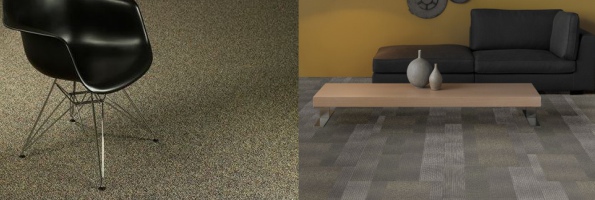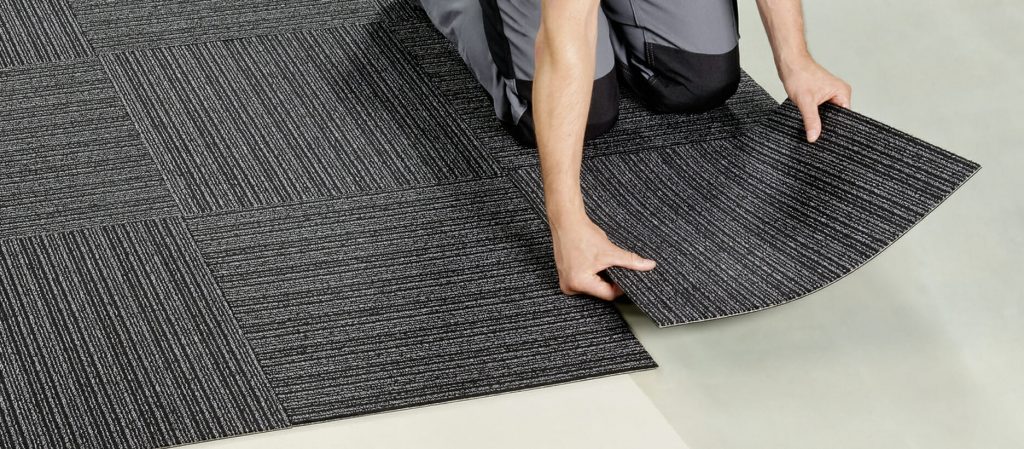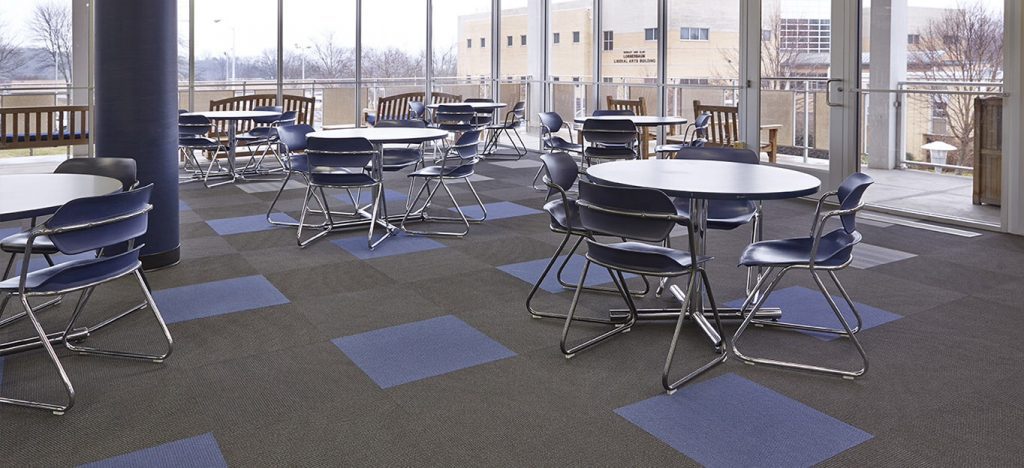Commercial Carpet – Know before you Buy
The world of commercial carpet is changing at a rapid rate. New commercial carpet products and carpet solutions make for a massive selection of options for every type of facility. If you’re considering carpet for your facility, it’s important to choose the right product for your application. According to the Carpet Buyers Handbook, “synthetic fibers make up more than 99% of the fiber used by the U.S. carpet industry.” Most carpets used in commercial applications are usually Nylon, Olefin or Polypropylene and are constructed in loop, cut pile (both broadloom) or carpet tile. Each of these fibers has its own set of strengths and weaknesses that can be used to help determine which type of carpet fits your needs. There are countless design possibilities for each type of carpet fiber so it’s important to make a checklist of what your area needs.

Things to consider when choosing commercial carpet:
- Budget
- Type of installation/ Noise reduction
- Maintenance
- Safety needs
- Colors and patterns
What’s your budget?
When it comes to commercial carpet, pricing can run the gamut. Remember that unlike hard surface flooring, carpet will take a beating and will eventually show wear. It’s helpful to decide how long you want to keep the carpet too, and that may influence your cost decision. If you spend less, you may have to replace it sooner, and if you spend more to get a higher quality product, it will last longer. So, it’s important to weigh the cost of replacement against spending a higher amount up front. Olefin/Polypropylene carpet is usually the carpet of choice if you are on strict budget.
Broadloom or Carpet Tile?
Broadloom carpet is produced on a wide loom and generally comes in 12 foot wide rolls. It is usually glued directly to the subfloor and is cut to size for wall-to-wall installation. Broadloom comes in a wide variety of colors and patterns and may offer a lower upfront material cost than Carpet Tiles. However, broadloom carpet may produce more waste during installation and usually requires a complete replacement if damaged or showing extensive wear. Where modular furniture exists, furniture moving is much more disruptive and expensive with broadloom carpet installations.
Carpet tile (also called modular carpet or carpet squares) is produced in pre-sized squares, rectangles and planks tufted to a high a performance backing. Installation is generally more efficient and produces less cutting and waste versus broadloom. If spaces are damaged or worn, replacement of singular tiles is practical and easy. Designers have almost limitless options mixing styles, colors and patterns of tiles.

What kind of fiber is best for my installation?
To make the right commercial carpet choice and to maximize performance, you’ll need to analyze how much foot traffic you will have to help determine the level of durability you will need. You may also want to think through what kind of dirt may be tracked in, i.e., heavy soil, mud, grass, or dust.
The great majority of commercial carpet is made of Nylon but Olefin or Polypropylene products also exist in the marketplace. Olefin/Polypropylene carpet is usually stands up well to “moderate” amounts of traffic. Olefin/Polypropylene carpets are “solution dyed” (meaning the color goes completely through the fiber like a carrot rather than being just on the surface like a radish), are naturally less porous making them more stain resistant. These budget carpets also work well in low traffic areas or an office or space that you aren’t in for the long haul. Olefin is typically a less resilient fiber however and therefore may crush or ugly out faster than its nylon counterparts.
Nylon, on the other hand, is the highest quality fiber carpet for a commercial installation. It’s more expensive, but it’s also more durable so it will inherently look better longer. Like the Olefin/Polypropylene fiber carpet, some Nylon products are solution dyed as well and offer the same level stain resistance. You will get more bang for your buck with Nylon if you have heavy foot trafficked areas, so spending a bit more may be to your benefit over the life of the carpet.
Many facilities have open areas and noise reduction is a concern. Carpet naturally absorbs sound, and additional padding may be added to enhance this feature.

What kind of maintenance will I need?
Like any floor covering, carpet will need to be taken care of to last. Carpet does need to be cleaned and maintained so is important to be familiar with the manufacturer warranties and suggested maintenance instructions in advance.
Is safety a concern in my flooring area?
Commercial carpet not only cushions footsteps and reduces slips and falls, but it also minimizes injury when falls do occur. While safety is important for any facility, it is particularly important where elderly people may be, or where young children may be.

What colors and patterns do I need?
Design, color, and patterns in your floor covering can make an important statement about your building or facility. Flooring can go beyond a practical purpose to make a distinctive statement or send a message. For example, muted and neutral colors can create a soothing effect, while multicolor patterns can hide dirt near entrances. Different commercial carpet styles and types can influence the overall look and feel of an environment.
Choosing a carpet that is right for your installation takes some time to evaluate. Be sure you explore all your options. Ask your Continental Flooring representative about available carpet products. Continental offers the newest flooring products available. Ask your Continental Flooring representative about options. We can offer materials only or complete installation services. GSA Buyers may wish to register online to view GSA pricing. This feature allows buyers quick, up-to-date access to 17 different GSA contracted manufacturers. Please feel free to call us for product advice, free samples, assistance in specifications, or place an order. One call does it all!




